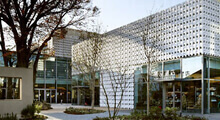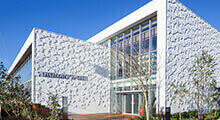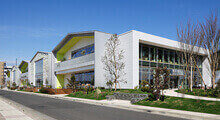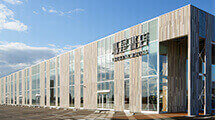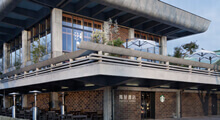[46th] Michiko Mamuro's Bookshelf "Will Nakano's Dad Solve the Mystery?" by Kaoru Kitamura / Bungeishunju
Known as the "original charismatic bookseller," DAIKANYAMA TSUTAYA BOOKS, who recommends books in a variety of media including magazines and TV.
In this series, we take a peek into the "bookshelves" in the mind of our most popular concierge.
Please enjoy it along with his comments.
* * * * * * * *
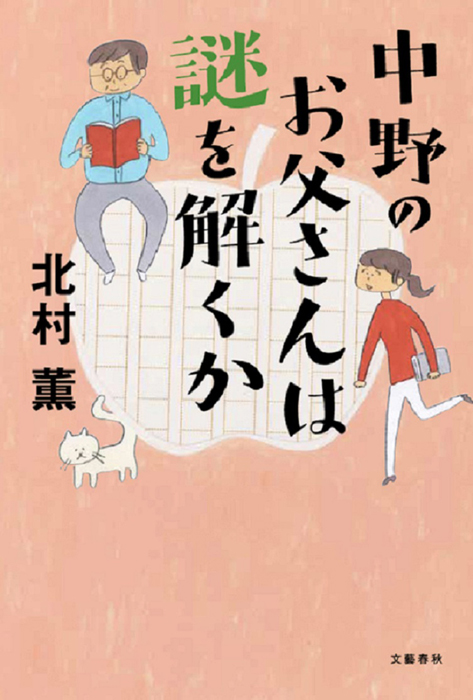
"Will Nakano's Dad Solve the Mystery?"
Kaoru Kitamura/Bungeishunju
* * * * * * * *
The joy of Kaoru Kitamura's novels is that they are like a chain reaction: from one event, many other interesting stories emerge.
It's not "trivia." It's not "miscellaneous," but rather anecdotes that make you think, "Wow, the professor knows this," or, "If I could remember this, I'd be able to read books more thoroughly." It's not "a spirit of service." Service is about adding something to something that isn't really needed. Professor Kitamura's "apple-eating" style isn't about "attaching," but rather "coming out."
There was an architect in the past who said, "Buildings should be built so that they appear to grow out of the ground," but modern Japanese buildings and apartments are "built to be demolished," or rather, because buyers tend to prefer new construction, they are built with a structure that makes them easy to destroy. When I think of a book that is readable only for its plot and that can be thrown away once you reach the last page, I remember the dull vacant lot of "Oh, Where's That Building?"
Anyway, Kitamura's works grow out of the ground. They grow out of deep roots. And that ground is books.
This is often seen in the "Nakano's Dad" series. The protagonist, Miki, is an editor for a literary magazine, and she brings mysteries, from small everyday matters to major literary works, to Nakano's family home. Nakano's father, a Japanese teacher whose hobby is visiting second-hand bookstores, uses his vast knowledge to tackle the mysteries.
The third chapter of this book, the second in the series, "Will Nakano's Dad Solve the Mystery?", titled "Where did the Gascon Soldiers Come From?", is a fun read that starts with Matsuno Kazuo, the illustrator for Edogawa Ranpo, then Gregory Aoyama's comics, the mysterious phrase "It was the Gascon soldiers who came" that appears in Dazai Osamu's "Spring Thieves," the French literature that was its origin, and even explains why Dazai did not just reveal the origins of the "Gascon Soldiers" even though many different authors and works appear in "Spring Thieves."
In the first episode, "Vertical or Horizontal," a veteran author who Miki had worked with won a major award. He took the stage to express his joy and gave a lively speech about everything from "Cuore Monogatari" to the secrets of Yoichiro Minami, the translator of the "Gentleman Thief Lupin Series."
And even though it was an award that he had written for me, I was impressed by how he ended his speech with a focus on the power of reading, saying, "I feel like the books have rewarded me by saying, 'You've read well without getting bored up until now.'" I thought that Professor Kitamura's love of reading had "come out."
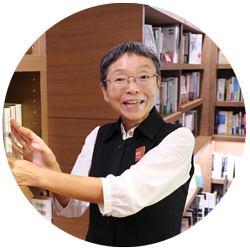
DAIKANYAMA TSUTAYA BOOKS Literature Concierge
Michiko Mamuro
【profile】
She is the "original charismatic bookseller" who recommends books in various media such as magazines and TV. She has serials in magazines such as Fujingaho and Precious, and Asahi Shimbun Digital's "Honya no Hon". She is also active as a book critic, and her paperback reviews include "Tiny Stories" (Yamada Eimi/Bunshun Bunko), "Motherhood" (Minato Kanae/Shincho Bunko), "Meandering Moon" (Sakuragi Shino/Futaba Bunko), and "Staph" (Michio Shusuke/Bunshun Bunko).



